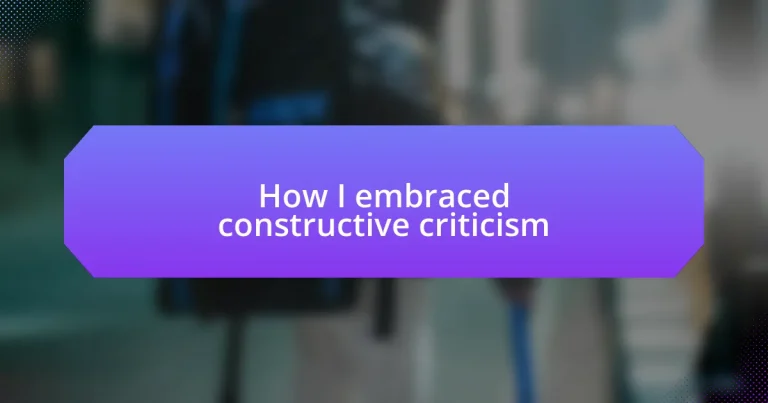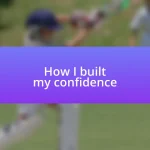Key takeaways:
- Constructive criticism can catalyze personal growth by shifting one’s perception from defensiveness to a perspective of curiosity and learning.
- Recognizing the intention behind feedback enhances self-awareness and fosters resilient, continuous growth.
- Effective techniques for receiving feedback include focusing on the message, using open body language, and asking clarifying questions for better understanding.
- Celebrating progress and acknowledging small victories in response to feedback is crucial for maintaining motivation and recognizing personal development.
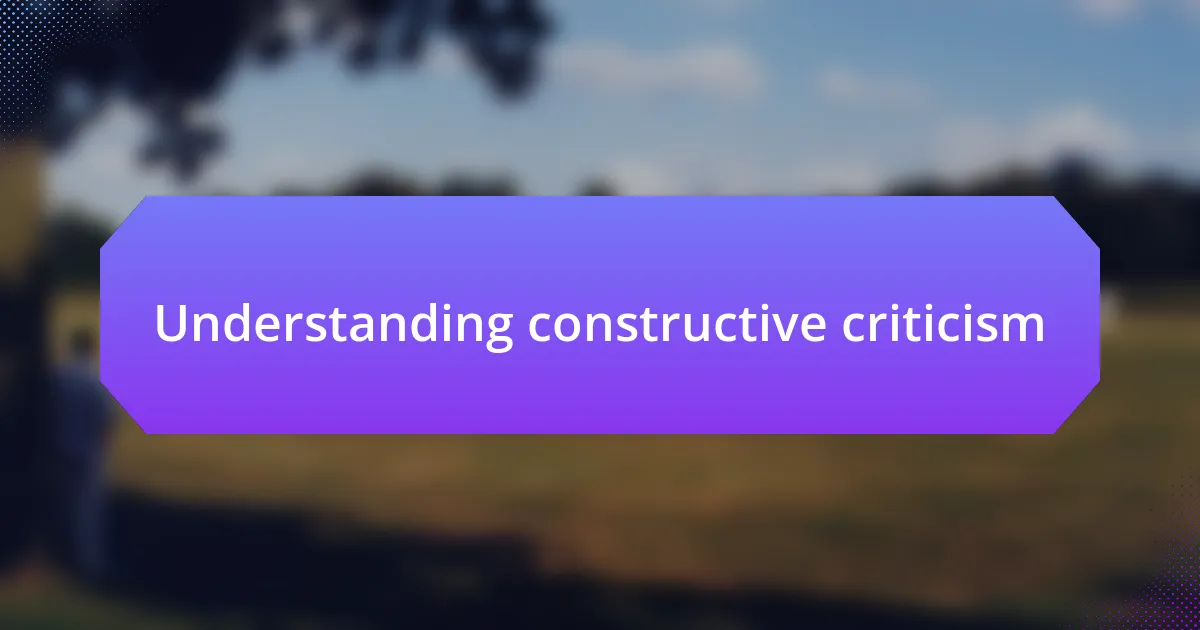
Understanding constructive criticism
Constructive criticism is often misunderstood, but I believe it can be a powerful catalyst for personal growth. I recall a time early in my career when a supervisor pointed out my presentation weaknesses. At first, I felt defensive, but then I realized their feedback was an opportunity to sharpen my skills, leading me to seek out resources and eventually transform how I communicate.
Sometimes, I find myself wondering, why do we fear criticism? For me, it’s all about perception. When I shifted my perspective from viewing criticism as an attack to seeing it as a guide, everything changed. The next time I received feedback, I approached it with curiosity and a willingness to learn, which significantly reduced my anxiety and increased my confidence.
It’s essential to remember that constructive criticism aims to help us improve, not to tear us down. I once faced a particularly challenging project where my ideas were met with skepticism. In that moment, I could have chosen to ignore the feedback, but embracing it led to deeper insights and ultimately a more refined final product. This taught me that listening, even when it feels uncomfortable, can foster incredible growth.
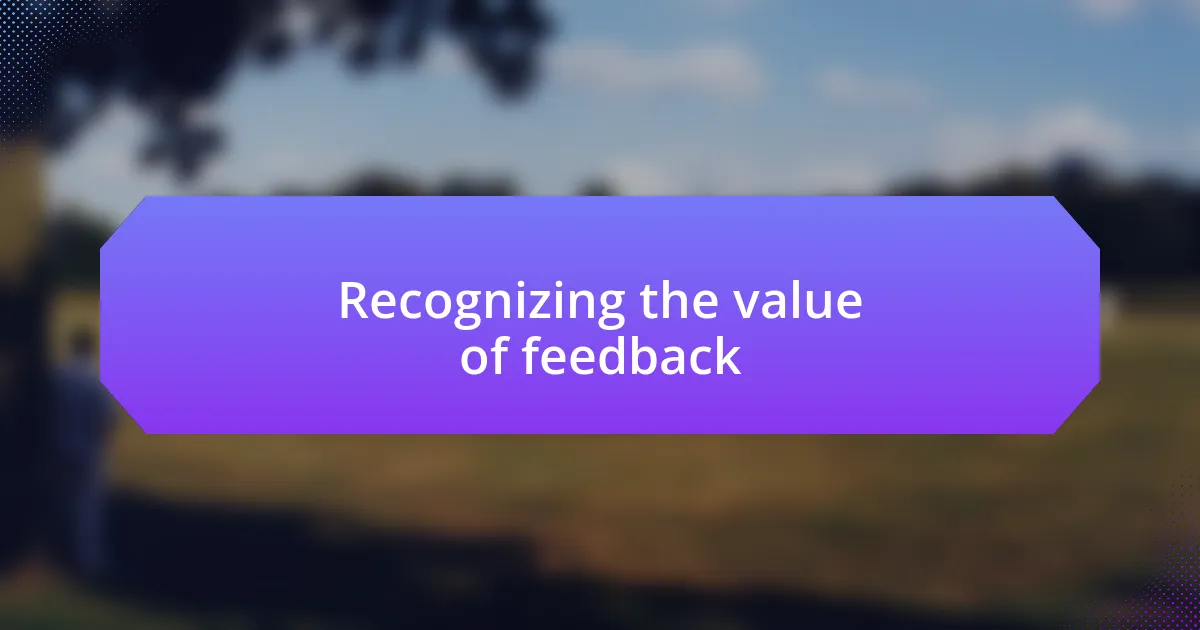
Recognizing the value of feedback
Recognizing the value of feedback goes beyond just hearing the words; it involves understanding the intention behind them. I remember a time post-presentation when a colleague pointed out that my visuals were too cluttered. Initially, I felt embarrassed and defensive, but reflecting on their perspective helped me see that their goal was to enhance my effectiveness. That realization sparked a desire in me to improve not only that presentation but my overall communication style.
- Ongoing learning: Feedback encourages a mindset of continuous growth.
- Strengthened relationships: Valuing feedback can foster more open communication with peers.
- Enhanced self-awareness: Feedback illuminates blind spots we may not see ourselves.
- Greater resilience: Adopting feedback as a tool in challenging situations reinforces our ability to cope with criticism.
- Improved outcomes: Actively incorporating feedback often leads to more successful and polished work.
Embracing criticism really transformed my approach to my work, turning what once felt like judgment into valuable insights.
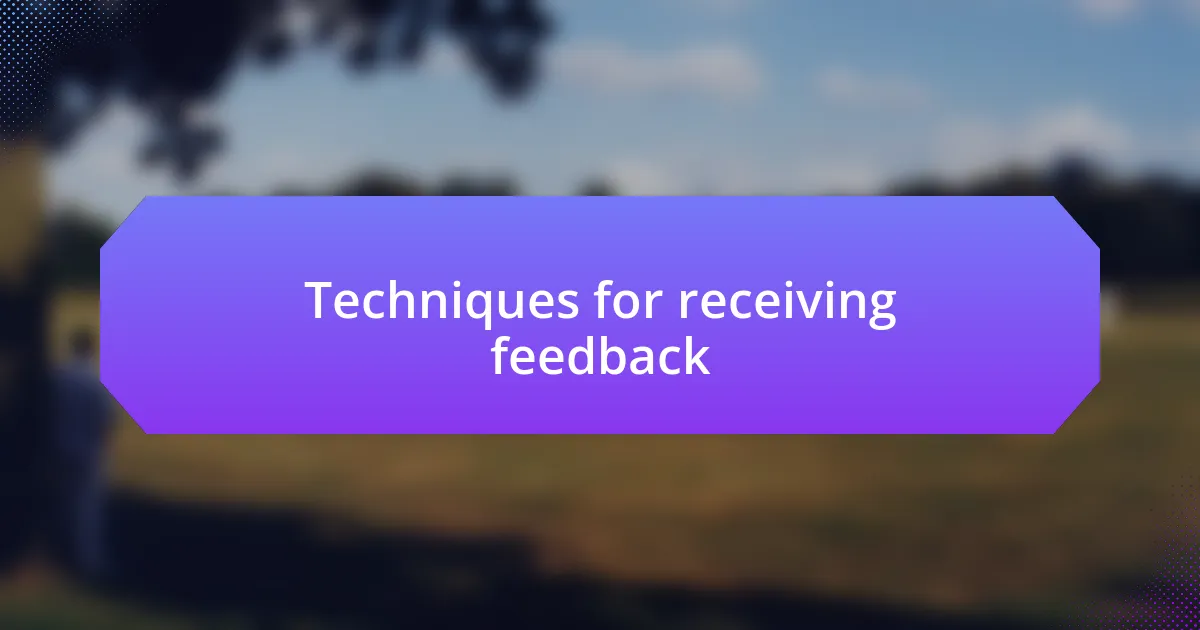
Techniques for receiving feedback
Receiving feedback can be an emotional experience, but I’ve found that focusing on the message rather than the delivery helps me process it better. For instance, during a project review, I received some tough criticism about my coding style. Rather than feeling hurt, I reminded myself that their comments stemmed from a desire to help me grow. This shift in mindset made all the difference.
Another important technique is to cultivate an open body language. When I sit down to hear feedback, I consciously check my posture and facial expressions. I know that crossing my arms or frowning may convey defensiveness. Instead, I aim to nod and maintain eye contact, signaling to the feedback giver that I’m receptive to their insights. This not only helps me absorb what they’re saying but also fosters a more positive interaction.
Finally, asking clarifying questions can be incredibly useful. I remember after receiving feedback on a report, I asked my colleague to elaborate on their suggestions. This not only showed my willingness to learn but also gave me a clearer understanding of how to improve my work. Engaging in dialogue about feedback can transform it from a one-sided critique into a collaborative learning experience.
| Technique | Description |
|---|---|
| Shift Your Mindset | Focus on the intention behind the feedback rather than the delivery. |
| Use Open Body Language | Convey receptiveness through body language; avoid crossing arms and maintain eye contact. |
| Ask Clarifying Questions | Engage in dialogue to deepen understanding of the feedback provided. |
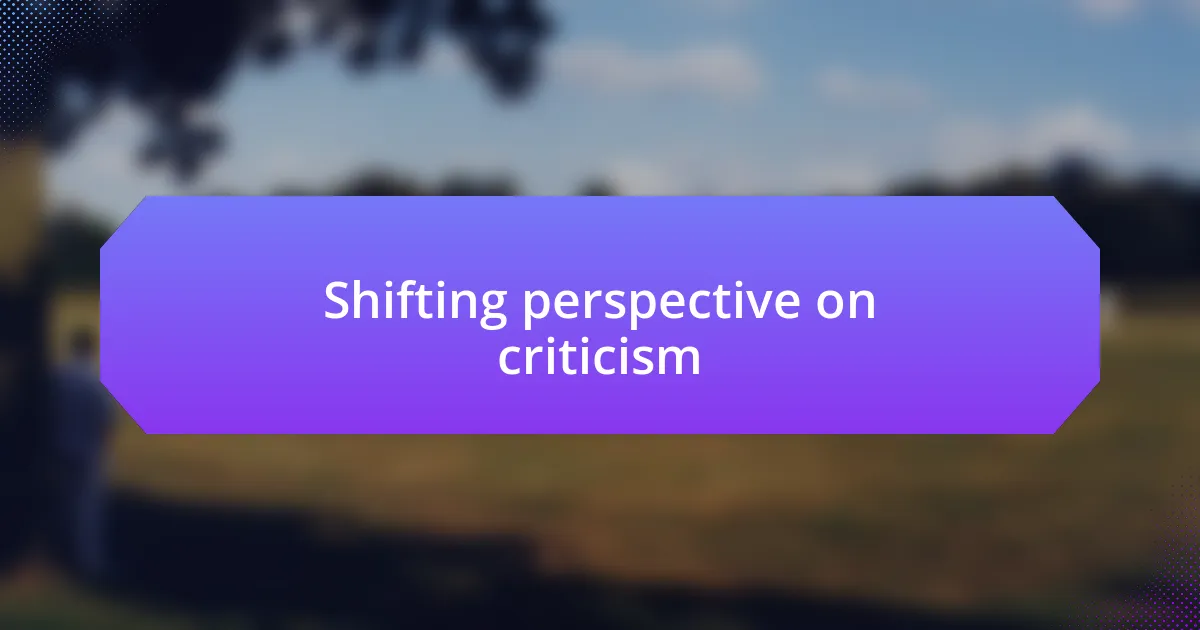
Shifting perspective on criticism
Criticism used to fill me with dread, but I realized I was really nervous about how it reflected on my abilities. One day, after receiving a blunt critique on my presentation skills, I took a moment to reflect. I asked myself, “What if this feedback is a stepping stone to becoming a better communicator?” That simple question shifted my perspective. Instead of seeing it as an attack, I viewed it as a chance to develop my skills.
It’s fascinating how changing one’s viewpoint can turn criticism from a painful experience into a valuable lesson. When I took a course on public speaking, my instructor pointed out several areas where I could improve. Initially, I felt defensive and disheartened, but then I considered her feedback as a gift. Instead of sulking, I worked on those areas, and the improvement was noticeable. Suddenly, what felt like a setback turned into a breakthrough.
I often think about how I can transform each piece of criticism into an opportunity for growth. Have you ever had a similar experience? I remember a colleague once told me that feedback is simply information—and we get to choose how we respond to it. This perspective not only made receiving criticism easier but also encouraged a continuous cycle of improvement in my professional life.
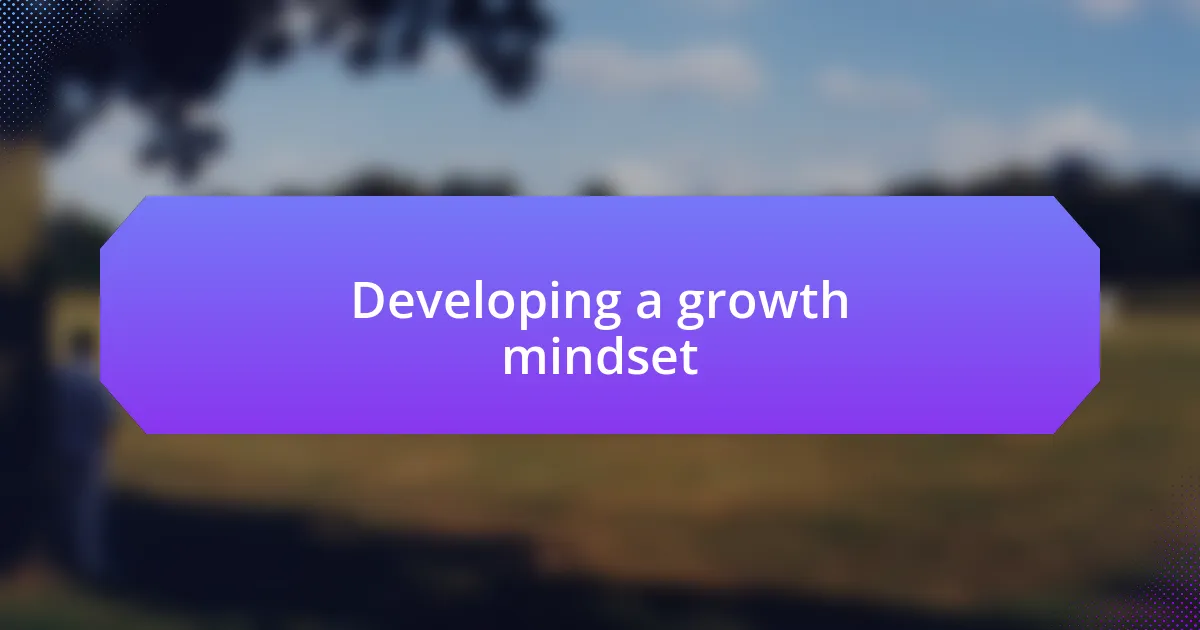
Developing a growth mindset
Developing a growth mindset has been a game-changer for me. I remember a time when I was overwhelmed by failure after missing a deadline at work. Instead of being consumed by disappointment, I dared to ask myself, “What can I learn from this?” That moment marked the beginning of my journey towards embracing challenges, reinforcing my belief that every setback is a setup for future success.
One of the most impactful lessons I learned came during a project review. The feedback I received felt harsh at first, but I stopped to consider how each comment could help me refine my future projects. In that instance, I realized that a growth mindset is not just about accepting criticism; it’s about actively seeking it out as a tool for advancement. How liberating it felt to transform criticism into a strategic ally rather than viewing it as an adversary!
I’ve also found that engaging with mentors who embody a growth mindset has been incredibly beneficial. Their enthusiasm for feedback and relentless pursuit of improvement inspire me to adopt the same approach. It makes me wonder, wouldn’t it be wonderful if everyone viewed constructive criticism as an opportunity rather than a threat? Reflecting on this has reinforced my belief that a growth mindset isn’t just a concept; it’s a way of approaching life’s challenges with curiosity and resilience.
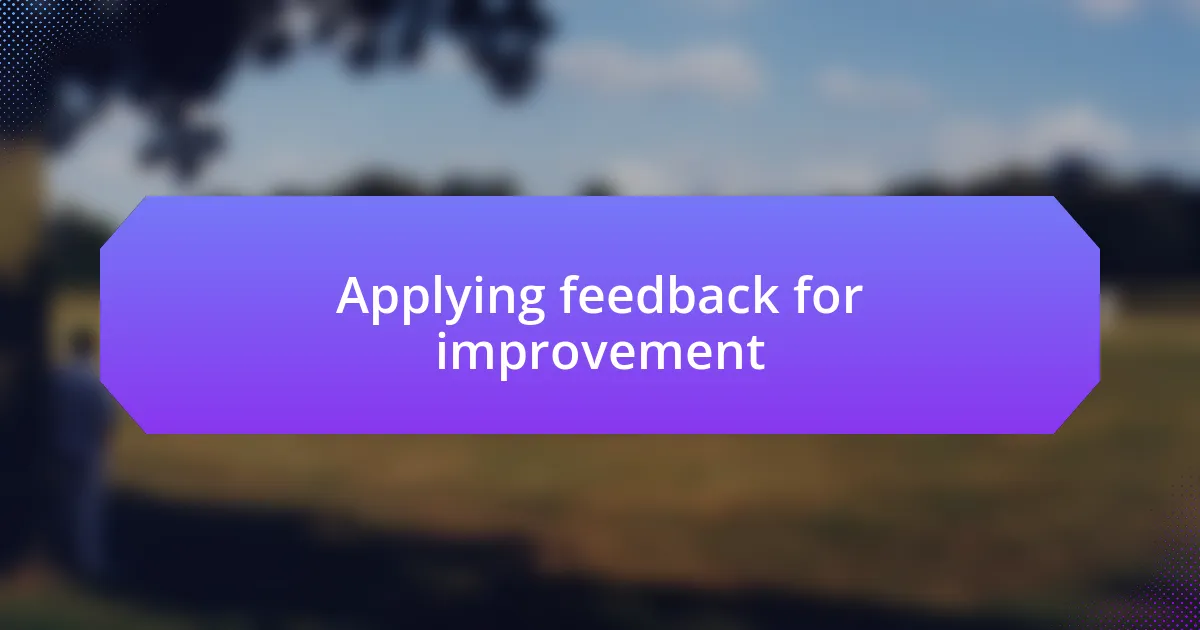
Applying feedback for improvement
Receiving feedback is only the first step; applying it effectively is where true growth happens. I recall a presentation I delivered that received mixed reactions. While some praised my delivery, others pointed out major flaws in my content structure. Instead of clinging to the compliments, I focused on revising my approach based on the critiques, which not only improved future presentations but also enhanced my confidence. Have you ever noticed how addressing feedback directly transforms both your skills and mindset?
One effective strategy I’ve adopted is to create a feedback log. It sounds simple, but documenting comments, suggestions, and my responses has been incredibly insightful. I not only track my improvements, but I also remain aware of recurring themes in the feedback I receive. This practice has helped me see patterns that I might otherwise overlook. Don’t you think having a tangible record of your progress can motivate you to strive for more?
Lastly, I’ve learned to view the process of applying feedback as a journey, not a destination. After revisiting feedback a few weeks later, I often discover new layers of insight I initially missed. This has changed how I approach feedback altogether; it becomes less about immediate fixes and more about evolving my skills over time. Isn’t it fascinating how our perspectives can shift with experience, ultimately leading us to a more profound understanding of our strengths and areas for growth?
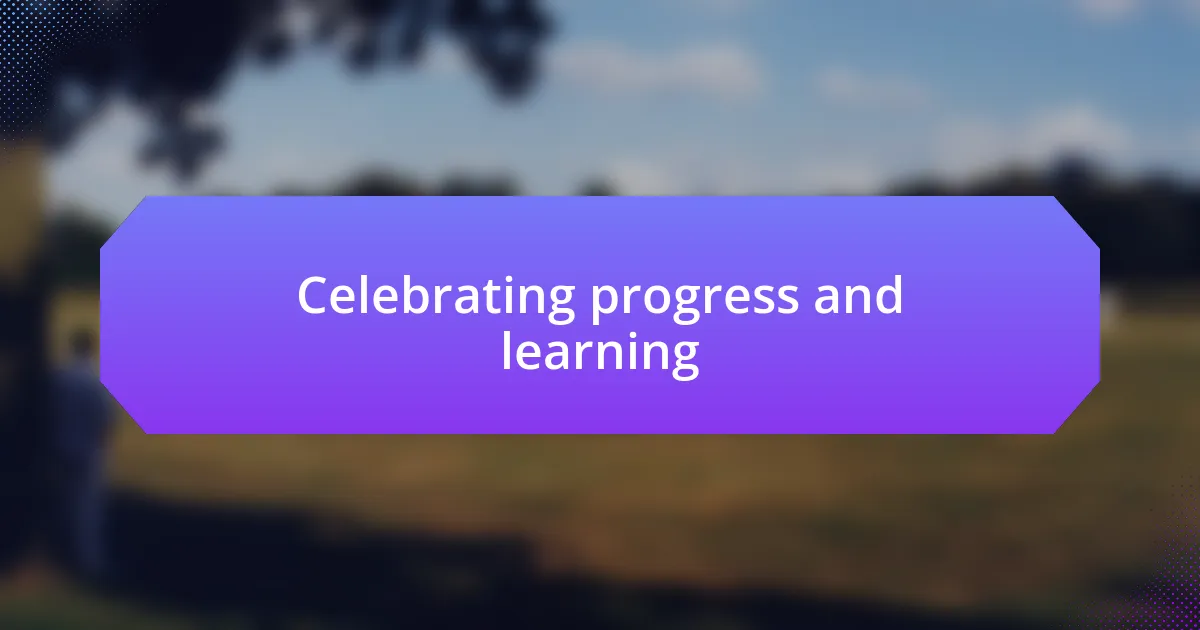
Celebrating progress and learning
Celebrating progress feels incredibly empowering. I remember a time when I reviewed my feedback log after a particularly tough project. To my surprise, I saw a trail of growth that I hadn’t recognized in the moment. Each critique, whether harsh or gentle, had become a stepping stone that led me to a more refined skill set. Doesn’t it feel rewarding to see how far you’ve come, even through adversity?
Reflecting on my journey, I often find myself feeling grateful for the challenges along the way. One instance that stands out is when I struggled with a specific skill; it felt insurmountable at the time. But as I embraced constructive criticism and worked through it, I not only gained confidence but also a deep appreciation for the learning process. Have you ever felt that same sense of triumph when overcoming a hurdle?
Progress isn’t just about hitting a milestone; it’s about recognizing the small victories that fuel our growth. For example, celebrating my willingness to accept feedback became just as important as successfully implementing it. These moments of acknowledgment help me stay motivated and remind me that learning is a continuous journey. Isn’t it fascinating how every bit of progress, no matter how minor, contributes to our overall development?












